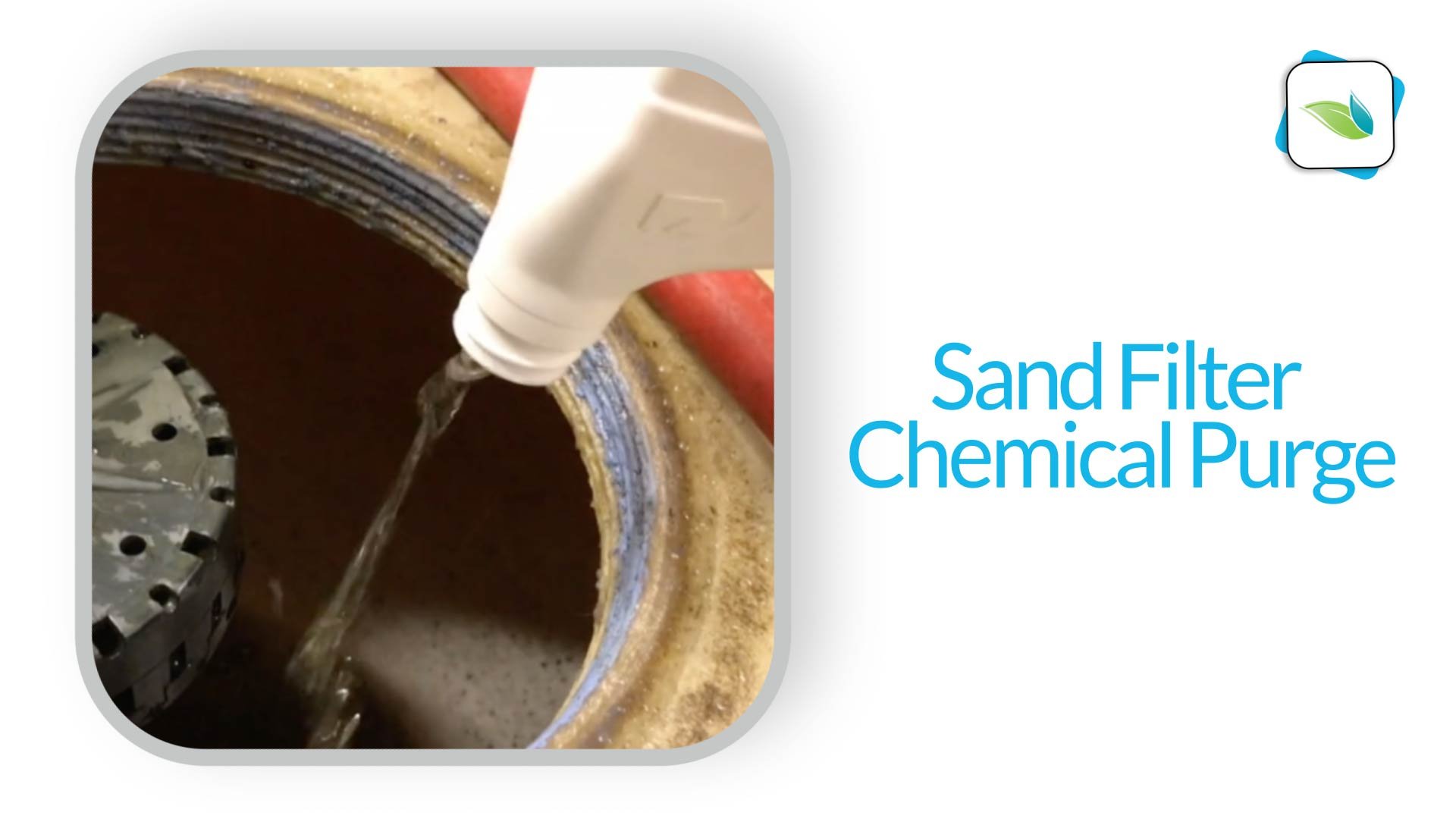Sand Filter Purge

Sand Filter Purge
Chemically refurbish sand filters without replacing sand by removing non-living organics and other fouling, then backwashing to waste.
Overview
Have you ever been told that filter sand "wears down" and needs to be replaced after a certain number of years? That seems to be the industry standard explanation to justify costly filter sand replacements, but we don't buy it anymore. We went into a YMCA with 11-year-old sand in it, and we chemically purged it. After just 4 hours and two backwashes, we could not tell the difference between the chemically-refurbished sand and brand new sand. The customer saved thousands of dollars because they did not need the sand changed, and their filter is working great.
Related: How to Implement the Orenda Program
You will need:
Phase 1: Chemicals
- Turn pump off, isolate the filter and open up the lid.
- Raise the water level in the filter to about 2-3” above the sand.
- Collect a handful of dirty sand for before-and-after samples (optional).
- Remove large physical debris (if applicable) prior to adding chemicals
- Add Orenda enzymes and phosphate remover to the filter at a 4:1 ratio (enzymes to phosphate remover).
- Dosing per TR-140 sized commercial sand filter: One quart (32 fl.oz.) of CV-600 enzyme and 8 fl.oz. of PR-10,000. Optional for extreme fouling, add 8 fl.oz. of SPA-500 too.
- Dosing per 100 pounds of sand/media: 4 fl.oz. of CV-600 enzyme and 1 fl.oz. of PR-10,000. Optional for extreme fouling, add 1 fl.oz. of SPA-500 too.
- Stir and mix chemicals deep into the sand bed as thoroughly as possible.
- We recommend an air compressor with a long wand. If that is unavailable, use a garden hose, broomstick or something similar to allow chemicals to soak deep into the sand bed.
- Start a timer for a minimum of three hours (the longer, the better). Leave the filter lid off during the wait.
Phase 2: Backwash and Rinse
- After at least three (3) hours, close the filter lid and backwash.
- After backwashing, turn pumps off again, open the filter and inspect sand.
- Collect a handful to compare sand before-and-after (optional).
- If the sand filter is not to your satisfaction, repeat this step after the second backwash.
- Close filter again, and backwash for a second time. This step is very important, make sure you backwash again!
- The first backwash lifts most of the organics out of the sand, and causes suds and foaming. The second backwash flushes all of that out of the filter to waste.
- After the second backwash, run the rinse cycle thoroughly.
- After rinsing, resume normal operation with your newly cleaned sand filter.
Additional information
For larger filters, give the process more time. The success of this procedure depends on how well you can mix the products into the sand bed and agitate it. Oxygenation and aeration are beneficial (i.e. injecting air from the bottom up, if possible). The more oxygen and turbulence, the better. Consider including SPA-500 when purging a filter with extreme fouling.
The 4:1 ratio is important for this procedure to work properly. If you want Orenda’s help, contact us directly. We’re happy to walk you through it.
Videos:
More Questions?
866-763-4269
